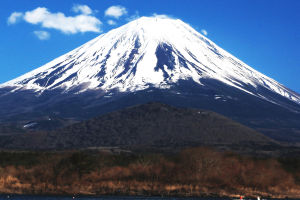Recently, Buffalo, New York, USA was hit by a blizzard.
According to data from the National Weather Information Center of the United States, the snow depth at the Buffalo Niagara International Airport Station on November 20 reached 55.8 centimeters, and the maximum snow depth near the suburbs was about 196 centimeters. The blizzard broke many records.
Snowstorms often occur in winter in North America, with high intensity and long duration, and the impact area is mostly concentrated near the Great Lakes. What are the special reasons behind this?
1. Weather system combined with Great Lakes effect to drive blizzard
Buffalo, New York is located on the east coast of Lake Erie, in the southeastern part of the Great Lakes region. Severe snowstorms often occur in winter and last for a long time.
In this regard, relevant personnel analyzed that the blizzards that often hit the Great Lakes region in winter are cold drift snow formed by the "Great Lakes Effect".
Cold drift snow, that is, strong cold air blows over a relatively high-temperature lake, and the warm and humid water vapor on the lake's surface condenses quickly when it is cold.
The Great Lakes of the United States are located between 41° and 48° north latitude. They belong to the middle and high latitudes of the northern hemisphere.
The specific heat of water is relatively large, the temperature of the lake surface is higher than that of the land, and the freezing time is relatively late. When the strong cold air blows over, the rich warm and humid water vapor on the lake's surface will quickly condense to form snowfall.
In addition, the western part of North America has recently experienced an unusually strong blocking high pressure, while the high latitudes of central North America are controlled by the polar vortex.
The northwest airflow blocking the east side of the high pressure guides the polar vortex and the cold air from the polar regions accumulated in its vicinity to move southward, pass through the Great Lakes, and meet the warm and humid water vapor on the surface of the Great Lakes, resulting in this heavy snowfall process.
In addition, the west of North America is the Cordille Mountains and the Rocky Mountains, the east is the Labrador Plateau and the Appalachian Mountains, and the middle is the vast plains and lakes, causing the strong cold air from the poles to block the high pressure.
Under the guidance of the airflow, it can drive straight in and go south in a big way, which intensifies the generation of blizzards.
Blocking high pressure and polar vortex low pressure are relatively stable weather conditions that last for a long time, causing the Great Lakes region to suffer from snowstorms for a long time in winter.
2. Why is snowfall different in different countries at the same latitude?
Since western Europe faces the Atlantic Ocean to the west, the prevailing westerly wind (southwest wind) brings warm and humid air from the Atlantic Ocean, increasing the heat in western Europe and making the temperature milder.
As for East Asia in the east of the Eurasian continent, due to the difference in the thermal properties of land and sea, the atmospheric circulation controlling here is not the prevailing westerly belt, but the monsoon circulation, that is, the East Asian monsoon.
The southeast monsoon prevails in summer along the east coast of East Asia, and the wind blows from low latitudes to the land, increasing heat.
While the northwest monsoon prevails in winter, blowing from high latitudes to the sea, reducing heat.
This makes the average annual temperature in East Asia lower than that in Western Europe at the same latitude. At the same time, it is cold in winter and hot in summer, which makes the annual temperature range larger.
From the perspective of ocean currents, the North Atlantic warm current along the coast of Western Europe has the effect of warming and humidifying the coastal areas. The Thousand Islands' cold current along the coast of East Asia has the effect of cooling and dehumidifying the coastal areas.
From the perspective of landform, the coastline in Western Europe is more tortuous and longer, which makes the ocean go deep into the inland, deepens the oceanic climate, and makes the temperature milder.


